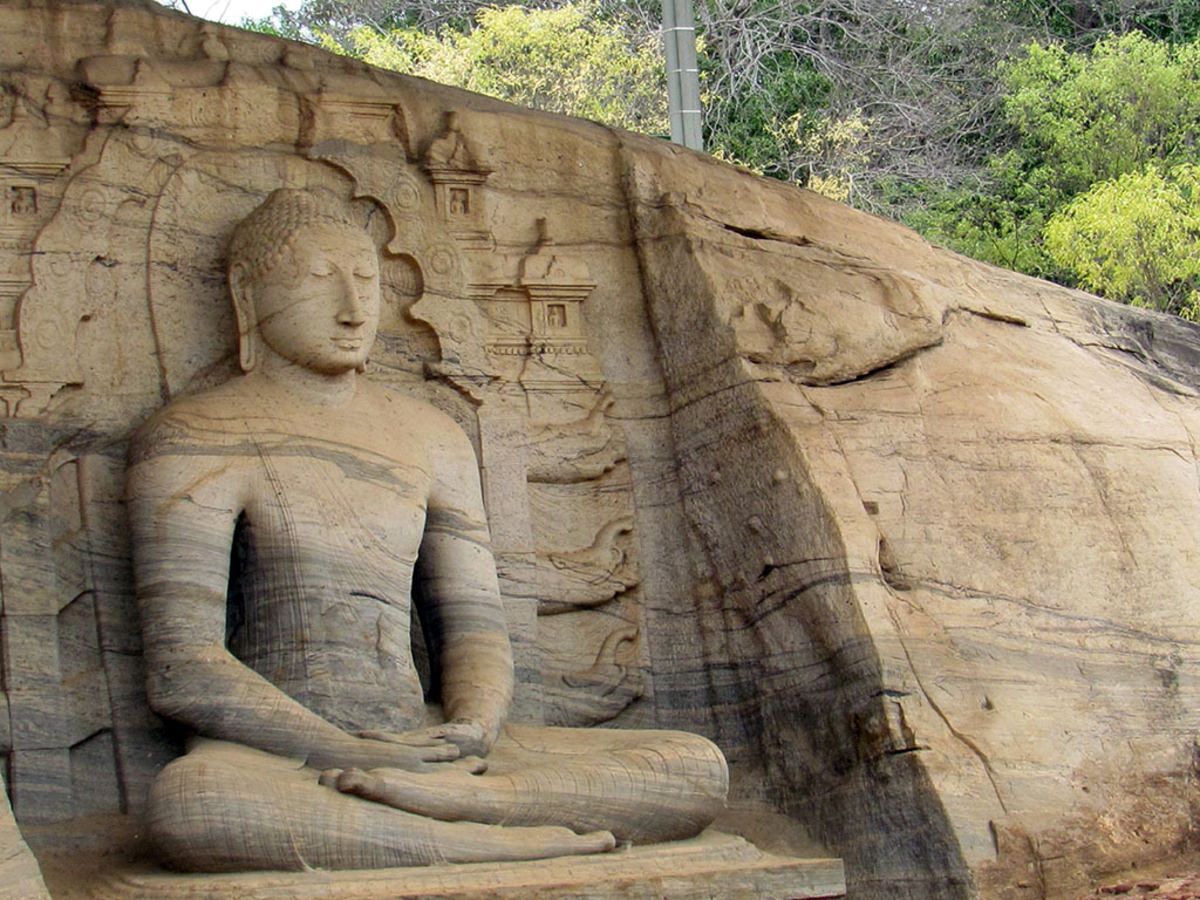Secrets Of Sri Lanka’s Ancient Polonnaruwa

Have you ever wondered what secrets lie within Polonnaruwa, one of Sri Lanka's ancient cities? This UNESCO World Heritage site offers a glimpse into a rich history filled with majestic ruins, ancient temples, and intricate sculptures. Walking through Polonnaruwa feels like stepping back in time, where every corner tells a story of kings, monks, and artisans. From the impressive Royal Palace to the serene Gal Vihara statues, this city has something for every history lover. Whether you're an avid traveler or just curious about ancient civilizations, Polonnaruwa promises an unforgettable experience. Ready to uncover its mysteries? Let's dive in!
Discovering Polonnaruwa: A Journey Through Time
Polonnaruwa, an ancient city in Sri Lanka, offers a glimpse into the island's rich history. Once the thriving capital of the Kingdom of Polonnaruwa, this UNESCO World Heritage site is filled with ruins, temples, and statues that tell stories of a bygone era. Let's explore some of the most fascinating places in Polonnaruwa.
The Royal Palace
The Royal Palace, also known as the King's Council Chamber, stands as a testament to the grandeur of ancient Sri Lankan architecture. This massive structure once housed the royal family and served as the administrative center of the kingdom.
Vijayabahu Palace: Built by King Vijayabahu I, this palace complex includes several chambers and courtyards. Though much of it lies in ruins, the remaining walls and foundations hint at its former splendor.
Council Chamber: This hall, where the king met with his ministers, features intricate stone carvings and a raised platform for the throne. The craftsmanship reflects the skill of ancient artisans.
Sacred Quadrangle
The Sacred Quadrangle, or Dalada Maluwa, is a compact group of religious buildings that showcases the spiritual heart of Polonnaruwa. Each structure within this area holds significant historical and religious value.
Vatadage: A circular relic house that once enshrined the Sacred Tooth Relic of Buddha. Its stone pillars and carved guardstones are masterpieces of ancient art.
Thuparama Gedige: This small, roofed shrine is one of the best-preserved buildings in Polonnaruwa. Its thick walls and vaulted roof are unique features.
Nissanka Latha Mandapaya: A pavilion with stone columns shaped like lotus stems. It was used for chanting Buddhist scriptures and is named after King Nissanka Malla.
The Gal Vihara
The Gal Vihara, a rock temple, is renowned for its stunning rock-cut Buddha statues. These statues, carved from a single granite rock face, are considered some of the finest examples of ancient Sinhalese sculpture.
Seated Buddha: This statue depicts Buddha in a meditative pose, with intricate details on the robe and facial features.
Standing Buddha: A towering figure standing over 7 meters tall. The serene expression on the face conveys a sense of peace and tranquility.
Reclining Buddha: This 14-meter-long statue represents Buddha's parinirvana, or final passing. The delicate carving of the facial features and the pillow beneath the head is remarkable.
The Parakrama Samudra
The Parakrama Samudra, or Sea of Parakrama, is a vast artificial reservoir built by King Parakramabahu I. This engineering marvel not only provided water for irrigation but also served as a defensive barrier.
The Great Reservoir: Spanning over 2,500 hectares, this reservoir is a testament to the advanced hydraulic engineering skills of ancient Sri Lankans.
The Statue of King Parakramabahu: Located near the reservoir, this statue honors the king who envisioned and constructed this massive water body. The statue stands as a symbol of his legacy.
The Lankatilaka Vihara
The Lankatilaka Vihara is a massive brick structure that once housed a colossal Buddha statue. Though the statue is now in ruins, the towering walls and intricate carvings remain impressive.
The Image House: This structure, with its 17-meter-high walls, was designed to enshrine a giant standing Buddha statue. The remaining fragments of the statue hint at its original grandeur.
The Outer Walls: Adorned with carvings of deities and mythical creatures, these walls showcase the artistic prowess of ancient craftsmen.
The Rankoth Vehera
The Rankoth Vehera is the largest stupa in Polonnaruwa, standing at 55 meters tall. This massive structure, built by King Nissanka Malla, is a significant religious site and a marvel of ancient engineering.
The Stupa: This bell-shaped structure, made of brick and plaster, is a prominent feature of the Polonnaruwa skyline. It symbolizes the Buddhist cosmos and serves as a place of worship.
The Surrounding Monastic Complex: The stupa is surrounded by smaller stupas, image houses, and meditation halls, creating a serene environment for spiritual practice.
Polonnaruwa's Timeless Allure
Polonnaruwa's ancient ruins offer a glimpse into Sri Lanka's rich history. Walking through the sacred city, you can almost hear the whispers of the past. The Gal Vihara statues, with their intricate carvings, showcase the artistry of ancient craftsmen. The Royal Palace and Council Chamber highlight the grandeur of a bygone era.
Exploring the Parakrama Samudra reservoir reveals the ingenuity of ancient engineers. Each site tells a story of a civilization that valued culture, religion, and innovation. Polonnaruwa isn't just a destination; it's a journey through time.
Whether you're a history buff or just curious, this ancient city will leave you in awe. Pack your bags, grab your camera, and set out to explore the timeless allure of Polonnaruwa. Your adventure awaits in this UNESCO World Heritage site.

